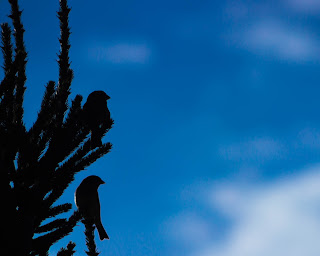All pictures were shot with a Canon EOS Rebel T3i digital SLR camera. No flash was used in any of the pictures.
Lens: 75-300 mm
Focal Length: 300 mm
ISO: 100
Av: f/5.6
Tv: 1/320 sec
Lens: 75-300 mm
Focal Length: 290 mm
ISO: 100
Av: f/5.6
Tv: 1/400 sec
Lens: 75-300 mm
Focal Length: 300 mm
ISO: 100
Av: f/5.6
Tv: 1/160 sec
Lens: 75-300 mm
Focal Length: 300 mm
ISO: 100
Av: f/5.6
Tv: 1/125 sec
Lens: 75-300 mm
Focal Length: 300 mm
ISO: 100
Av: f/5.6
Tv: 1/250 sec
Lens: 75-300 mm
Focal Length:
ISO: 100
Av: 300 mm
Tv: 1/250 sec
Lens: 75-300 mm
Focal Length: 300 mm
ISO: 100
Av: f/5.6
Tv: 1/400 sec
Lens: 75-300 mm
Focal Length: 300 mm
ISO: 100
Av: f/5.6
Tv: 1/400 sec
Lens: 18-55 mm
Focal Length: 39 mm
ISO: 100
Av: f/22
Tv: 1/20 sec
Lens: 18-55 mm
Focal Length: 18 mm
ISO: 100
Av: f/22
Tv: 1/20 sec
Lens: 18-55 mm
Focal Length: 18 mm
ISO: 100
Av: f/22
Tv: 1/30 sec
Lens: 18-55 mm
Focal Length: 18 mm
ISO: 100
Av: f/22
Tv: 1/30 sec
Lens: 18-55 mm
Focal Length: 39 mm
ISO: 100
Av: f/32
Tv: 2.0 sec

Lens: 75-300 mm
Focal Length: 300 mm
ISO: 200
Av: f/5.6
Tv: 1/100 sec

Lens: 18-55mm
Focal Length: 55mm
ISO: 100
Av: f/13
Tv: 1/25 sec
Lens: 75-300 mm
Focal Length: 270 mm
ISO: 100
Av: f/5.6
Tv: 1/2000 sec
Lens: 18-55 mm
Focal Length: 18 mm
ISO: 100
Av: f/8.0
Tv: 1/50 sec
Lens: 18-55 mm
Focal Length: 18 mm
ISO: 100
Av: f/22
Tv: 1/40 sec
Lens: 18-55 mm
Focal Length: 55 mm
ISO: 100
Av: f/22
Tv: 1/30 sec
Lens: 75-300 mm
Focal Length: 300 mm
ISO: 100
Av: f/6.3
Tv: 1/50 sec
Lens: 18-55 mm
Focal Length: 23 mm
ISO: 100
Av: f/22
Tv: 15.0 sec
Lens: 18-55 mm
Focal Length: 18 mm
ISO: 100
Av: f/22
Tv: 1/8 sec
Lens: 18-55 mm
Focal Length: 20 mm
ISO: 100
Av: f/22
Tv: 0.3 sec
Lens: 18-55 mm
Focal Length: 42 mm
ISO: 100
Av: f/22
Tv: 0.3 sec















































